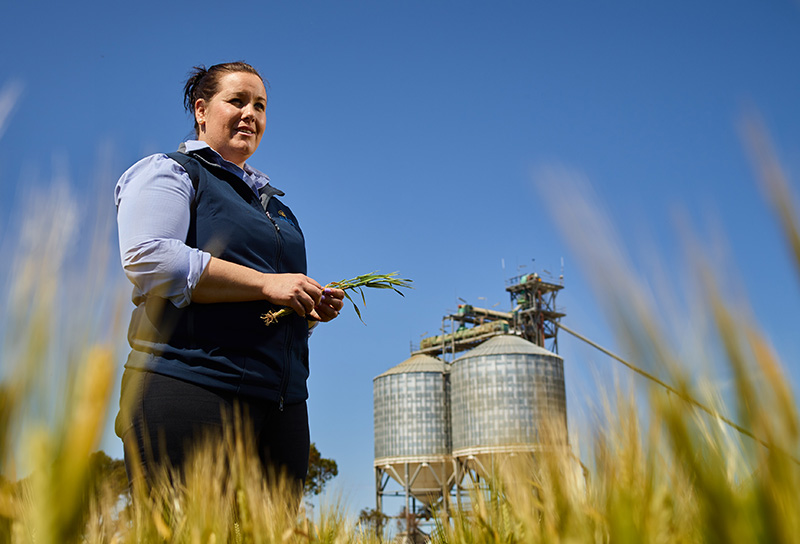Rising tide lifts all boats
By Matt Wallis
The last month has seen an extraordinary run across all major global agricultural commodities with severe weather concerns and strong demand dominating the headlines.
Extreme and prolonged dryness in the Brazilian Safrinha crop continues to see analysts slashing production estimates with some suggesting a further 4-8mmt could be wiped at the next USDA report due on May 12th. Not only has there been significant weather concerns but an increase in ethanol production coupled with strong US exports to the likes of China, Japan, Mexico and South Korea has seen the balance sheet continue to tighten. As such, the nearby May US Corn contract has managed to surge 216 USc/bu or 38% since mid-April and to add perspective, the last time we saw such a rally was in July 2012.
While the rally in corn has been impressive, the spotlight has been shared equally in the oilseeds complex. The theme of dry weather continues plaguing the canola growing regions of Canada where the nearby contract has surged CAD$142/t so far in May, trading as high as CAD$1,045/t - the highest value ever recorded. Canada, a traditional net exporter of canola, confirmed earlier that it will in fact import two cargoes of canola from the Ukraine to satisfy its domestic markets. Again, to put this in perspective, the previous high on the ICE exchange was for CAD$704/t set back in May, 1984.
A rising tide lifts all boats, and as such, wheat markets have managed to climb 130USc/bu or $60 AUD/t in the space of a month. With corn rallying on the Safrinha weather, it has created a feed hole which should see more wheat added to the feed ration.
It is also worth mentioning that while the northern US plains and Canada are dry, one decent rain will replenish these wheat growing regions.
Turning the attention to the domestic front, we see that much of the Australian cropping belt has had a favorable start to the 21/22 season with timely rainfall falling through most port zones.
Most Western Australian farmers have experienced better than average rainfall in April which, according to the Grains Industry of Western Australia, has seen canola plantings increase over 30% on last year’s acreage to a whopping 1.49 million hectares.
Over to South Australia where a dry spell appears set to continue well into May on top of what was a very much below average March/April period culminating in less than half the average rainfall received. The conditions are seeing farmers take a cautious approach to sowing with rotations modified to better suit the conditions.
Victoria is the story of two tales; Southern Victoria continues to record rain like every other year while the Wimmera and Mallee has largely missed out showing below average root zone soil moisture, the exception being a narrow corridor from Bendigo to Swan Hill with conditions described as average.
Northern and Central New South Wales continue to showcase their potential with convenient and plentiful sowing rainfalls while Southern New South Wales, in particular south of the Murrumbidgee, is hanging out for an event before the end of May.
WA Market Wrap - April

What a month it has been. A Cyclone tore through the northern wheatbelt, heavy downpours for the remaining wheatbelt and commodity markets rallying heavily over the past three weeks...
Read MoreAustralian grain in the box seat

...while growers are largely wanting to get the crop established before genuinely engaging the market, it is interesting to understand what is driving Australia’s values at present and whether the influencing factors will be present for the remainder of the season.
Read MorePlenty to be positive about

As we approach the end of April with rain gauges devoid of the desired monthly rainfall the New South Wales farmer continues to sow the crop, with one eye on the forecast and the other on a volatile grain market providing an entertaining distraction.
Read MoreA record year for canola?

As we approach the Anzac Day holiday many farmers across the state are taking advantage of fantastic sowing conditions for early sown crops such as grazing wheat and barley, and of course the traditional early sown crop, canola.
Read MoreExports moving at a good clip

Fresh data released from the United States Department of Agriculture (USDA) and the Australian Bureau of Statistics (ABS) highlighted the strong grain export program being executed around the world at present, with Australia featuring prominently in wheat, barley, sorghum and oilseeds.
Read MoreSA Market Wrap - March

The past two months have seen the ports a hive of activity and domestic consumers back in the market, with grain moving rapidly by road and rail into these customers and ports.
Read More